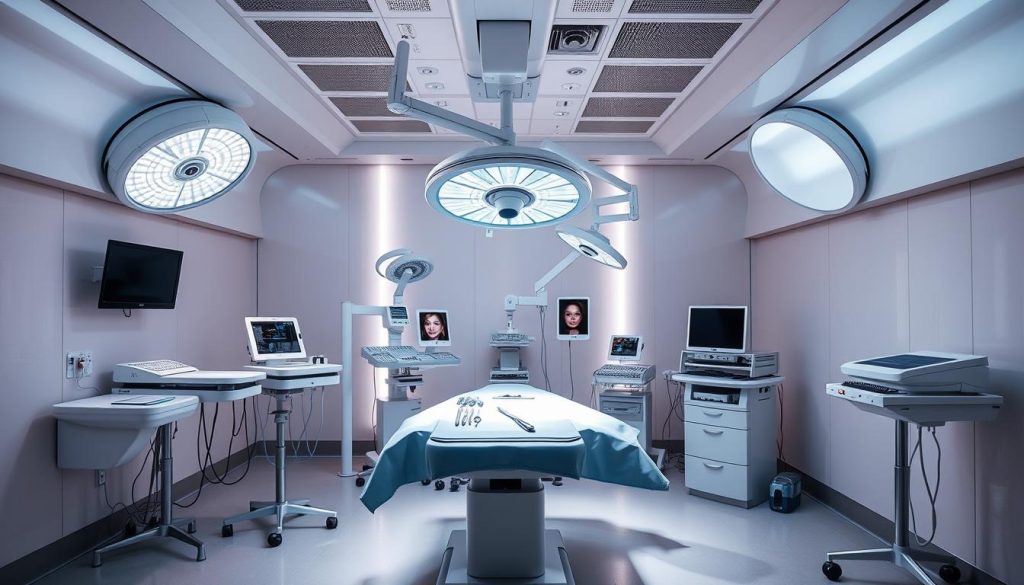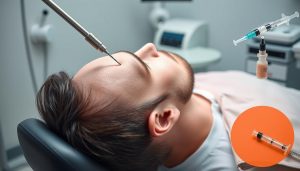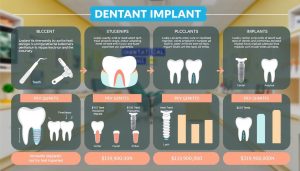Cosmetic surgery is now more popular than ever. People are looking for ways to improve their looks. There are many options available, from making faces look younger to changing body shapes.
This guide dives into the world of cosmetic surgery. It talks about different procedures, their benefits, and what happens during recovery. Knowing this helps people make smart choices about their looks.
Thinking about a facelift, bigger breasts, or non-surgical fixes? It’s important to know what you’re getting into. This article offers useful information. It’s a great place to start for anyone interested in cosmetic surgery and how it can boost self-confidence.
Understanding Cosmetic Surgery: A Comprehensive Overview
Cosmetic surgery has grown in popularity over the years. It aims to improve looks through surgery and medical treatments. Let’s dive into what makes this field so transformative.
Defining Aesthetic Medical Procedures
Aesthetic medical procedures cover many treatments to enhance looks. They include both surgical and non-surgical methods. These surgeries often focus on the face, breasts, and body shape.

Differences Between Cosmetic and Reconstructive Surgery
Though both are part of plastic surgery, cosmetic and reconstructive surgeries have different aims:
| Cosmetic Surgery | Reconstructive Surgery |
|---|---|
| Enhances appearance | Restores function and appearance |
| Elective procedures | Often medically necessary |
| Focuses on aesthetics | Addresses birth defects, trauma, or disease |
Evolution of Modern Surgical Techniques
Cosmetic surgery has made big strides. Today’s methods are safer, leave less scarring, and heal faster. The advancements include:
- Minimally invasive procedures
- 3D imaging for precise planning
- Advanced anesthesia methods
- Improved suturing techniques
With ongoing tech improvements, aesthetic procedures keep getting better. This means patients have more choices and better outcomes.
Popular Types of Facial Rejuvenation Procedures
More and more people are looking for ways to keep their faces looking young. There are many options, from surgery to non-invasive treatments. Each one targets different concerns.
Facelift and Neck Lift Options
Facelifts and neck lifts are surgeries that can greatly reduce aging signs. They tighten skin, smooth wrinkles, and give the face and neck a younger look. These effects can last for years, making them a lasting choice for looking younger.
Eyelid Surgery and Brow Lifts
Eyelid surgery, or blepharoplasty, removes extra skin and fat from the eyelids. Brow lifts lift sagging eyebrows, reducing wrinkles on the forehead. These surgeries make the eye area look more open and refreshed.
Non-Surgical Facial Treatments
For those who prefer less invasive methods, non-surgical treatments offer great results with little downtime. Dermal fillers add volume and smooth out wrinkles. Rhinoplasty with fillers can subtly change the nose shape without surgery. These options give quick results and are often cheaper than surgery.
| Procedure | Treatment Type | Recovery Time | Results Duration |
|---|---|---|---|
| Facelift | Surgical | 2-3 weeks | 5-10 years |
| Eyelid Surgery | Surgical | 1-2 weeks | 5-7 years |
| Dermal Fillers | Non-surgical | 1-3 days | 6-18 months |
| Non-surgical Rhinoplasty | Non-surgical | 1-2 days | 6-12 months |
Body Contouring and Enhancement Options
Body contouring has become more popular in plastic surgery. It reshapes and improves body contours. This helps patients achieve their dream body shape. Options range from tummy tucks to arm lifts.
Tummy tucks, or abdominoplasty, remove excess skin and fat from the belly. They tighten muscles for a smoother, firmer midsection. Arm lifts and thigh lifts target sagging skin on the arms and legs.
Liposuction is key in body sculpting. It can be used alone or with other procedures to remove fat. It’s great for the abdomen, hips, and thighs.
| Procedure | Target Area | Recovery Time |
|---|---|---|
| Tummy Tuck | Abdomen | 4-6 weeks |
| Arm Lift | Upper Arms | 2-3 weeks |
| Thigh Lift | Upper Legs | 3-4 weeks |
| Liposuction | Various Body Areas | 1-2 weeks |
Each body contouring option has its own benefits and limits. It’s important to talk to a board-certified plastic surgeon. They can help find the best procedure for your goals and body type. The right mix of techniques can change your life, boosting confidence and looks.
Breast Enhancement Procedures
Breast enhancement surgeries are popular among women looking to enhance their looks and confidence. These surgeries can fix issues like size, shape, sagging, and unevenness.
Breast Augmentation Techniques
Breast augmentation is a common surgery that makes breasts bigger and more shaped. Surgeons use implants or fat transfer to get the desired look. Breast augmentation can make women feel more confident and balanced.
Breast Lift Operations
A breast lift, or mastopexy, fixes sagging breasts by removing extra skin and reshaping the tissue. It makes breasts look younger and can be paired with augmentation for better results.
Breast Reduction Surgery
Breast reduction surgery removes extra tissue and skin to ease discomfort and improve shape. It offers both beauty and health benefits, like less back pain and better posture.
It’s important to talk to a board-certified plastic surgeon before getting breast enhancement. They can pick the right procedure for you, considering your body and goals. Keep in mind, recovery times and risks differ with each surgery.
“Breast enhancement procedures can significantly improve a woman’s self-image and quality of life when performed by skilled surgeons with proper consideration of the patient’s goals.”
The Role of Liposuction in Body Sculpting
Liposuction is a key part of body contouring. It removes fat from specific areas to shape the body. This method helps create a more defined look.
Common areas treated include:
- Abdomen
- Thighs
- Hips
- Buttocks
- Arms
Liposuction isn’t for losing weight. It’s for body shaping, targeting fat that diet and exercise can’t get rid of. It works best for people close to their ideal weight with good skin.
Today’s liposuction methods have improved. They offer better results and quicker healing. These include:
| Technique | Key Feature | Recovery Time |
|---|---|---|
| Tumescent Liposuction | Uses local anesthesia | 1-2 weeks |
| Ultrasound-Assisted | Liquefies fat with sound waves | 1-2 weeks |
| Laser-Assisted | Uses laser energy to break down fat | 3-5 days |
Liposuction has its limits. It can’t fix loose skin or cellulite. Results also depend on keeping a stable weight after the procedure. For those looking for non-surgical options, CoolSculpting or radiofrequency treatments are available. They might need several sessions for noticeable effects.
Medical Benefits of Cosmetic Surgery
Cosmetic surgery does more than make you look good. It also improves your health and happiness. Let’s see how these surgeries can make a big difference in your life.
Physical Health Improvements
Plastic surgery can make you feel better physically. For example, breast reduction surgery can ease back pain and improve your posture. Rhinoplasty can make breathing easier by fixing your nose. Tummy tucks might even help with bladder control issues.
Psychological and Emotional Benefits
Cosmetic surgery can change your mind as much as your body. Many people feel more confident and happy with themselves after surgery. This can lead to less anxiety and depression, making life feel more positive.
Quality of Life Enhancements
Cosmetic surgery can make everyday life better. People often feel more at ease in social situations and work. Physical changes can also make moving around and wearing clothes more comfortable, improving your overall life quality.
“My breast reduction surgery not only alleviated my chronic back pain but also gave me a new lease on life. I feel more confident and active than ever before.”
While cosmetic surgery offers many benefits, it’s important to consider the risks. Talking to a board-certified plastic surgeon can help ensure you get the best results for your needs and goals.
Preparing for Your Surgical Procedure
Getting ready for cosmetic surgery is a big step. Your plastic surgeon will help you with all the necessary steps. These steps are key to getting the best results and a smooth recovery.
First, you’ll have a detailed medical check-up. Your doctor will look over your health history and might ask for tests. This is to make sure there are no hidden health problems before you start.
Changing your lifestyle is also important. If you smoke, quitting is a must. Smoking can make healing slower and lead to more problems. Your surgeon might also suggest changes to your diet or how you take your medicines.
- Stop smoking at least 4 weeks before surgery
- Adjust medications as directed by your doctor
- Follow a healthy diet to boost healing
- Arrange for post-operative care and transportation
It’s also key to manage your expectations. Talk openly with your surgeon about what you want. Knowing what you can realistically expect can help avoid any letdowns.
Don’t forget about emotional preparation. Some people get nervous before surgery. Talking to your surgeon or a counselor can help calm these nerves.
| Pre-Surgery Checklist | Timeframe |
|---|---|
| Medical evaluation | 4-6 weeks before |
| Stop smoking | At least 4 weeks before |
| Adjust medications | As directed by surgeon |
| Arrange post-op care | 1-2 weeks before |
| Final consultation | 1 week before |
By following these steps, you’re setting yourself up for a great plastic surgery experience. Remember, the right preparation is key to being happy with your results.
Recovery Timeline and Post-Operative Care
After cosmetic surgery, proper recovery is key for the best results. Knowing how to care for yourself after surgery helps a lot.
Immediate Post-Surgery Care
Right after surgery, you’ll need extra care. Your doctor will give you specific instructions. These might include wearing compression garments, taking care of your incisions, and not doing too much.
It’s also important to go to follow-up appointments. This lets your doctor check on your healing.
Long-term Recovery Guidelines
Recovering from cosmetic surgery takes time. Swelling and bruising will go away over weeks or months. Your surgeon will tell you when you can start doing normal things again.
Being patient is important. Your body needs time to heal and adjust to its new shape.
Managing Pain and Discomfort
Pain after surgery can vary. Your doctor might give you medicine to help with pain. Ice packs, rest, and gentle movement can also help.
If the pain gets worse or you notice anything strange, call your surgeon right away.
| Recovery Phase | Duration | Key Points |
|---|---|---|
| Immediate | 1-7 days | Rest, wound care, limited movement |
| Short-term | 1-4 weeks | Gradual return to activities, follow-up visits |
| Long-term | 1-6 months | Full healing, final results visible |
Remember, everyone recovers differently from cosmetic surgery. Keep in touch with your plastic surgeon and follow their advice for the best results.
Potential Risks and Complications
Cosmetic surgery, like any medical procedure, comes with risks. It’s important for patients to know about these risks before they decide to get plastic surgery. Some common risks include infection, scarring, and problems with anesthesia.
Each cosmetic surgery has its own specific risks. For instance, breast implants can rupture or change how you feel about your nipples. Facelifts might cause nerve damage or hair loss where the incisions were made.
| Procedure | Potential Risks |
|---|---|
| Liposuction | Contour irregularities, fluid accumulation |
| Rhinoplasty | Breathing difficulties, altered sense of smell |
| Tummy Tuck | Poor wound healing, tissue necrosis |
Choosing a skilled, board-certified surgeon is key to reducing risks in cosmetic surgery. It’s vital to talk about your health history and any concerns with your doctor. This way, you can understand your personal risks better.
During recovery, watch for signs of complications. Look out for too much pain, fever, or swelling that doesn’t seem right. Talking to your surgeon right away can help fix problems fast. This ensures the best results from your plastic surgery.
Choosing the Right Surgical Facility
Finding the right place for plastic surgery or aesthetic procedures is key. It affects your safety and the outcome. A top facility ensures you get the best care during your journey.
Accreditation Standards
Check if the facility is accredited by groups like the American Association for Accreditation of Ambulatory Surgery Facilities (AAAASF). These places meet high quality and safety standards. This gives you confidence in your choice.
Safety Protocols
Good surgical centers have strict safety rules. They keep everything clean, have plans for emergencies, and have skilled staff ready for anything. This ensures your safety during your procedure.
Equipment and Technology
Modern tools are essential for successful procedures. The latest technology helps with precision and cuts down recovery time. Make sure to ask about the equipment and methods for your treatment.
| Factor | Why It Matters |
|---|---|
| Accreditation | Ensures facility meets high standards |
| Safety Protocols | Minimizes risks during procedures |
| Modern Equipment | Improves surgical outcomes |
| Experienced Staff | Provides expert care and support |
When picking a surgical facility for plastic surgery, think about these important points. A well-equipped center with the right accreditation and safety steps will greatly improve your experience and results.
Cost Considerations and Financing Options
Cosmetic surgery costs vary a lot. This depends on the procedure, the surgeon’s skill, and where you are. For example, a facelift can cost between $7,000 and $15,000. Breast augmentation might be $5,000 to $10,000. These prices include the surgeon’s fee, anesthesia, and facility costs.
When planning for plastic surgery, remember to add extra costs. This includes pre-operative tests, post-operative care, and any needed medications. Seeing cosmetic procedures as an investment in your appearance and health is key.
Many surgical practices offer financing to help make cosmetic surgery more affordable:
- Medical credit cards
- Personal loans
- Payment plans
- Healthcare-specific financing companies
Some people save up for their procedure, while others use financing to pay over time. Always check the terms and interest rates before choosing a financing option.
“Investing in yourself through cosmetic surgery can boost confidence and improve quality of life, but it’s important to make informed financial decisions.”
Don’t just look for the cheapest option. Focus on the surgeon’s qualifications, the facility’s accreditation, and the overall value. A consultation with a board-certified plastic surgeon can give you a detailed cost breakdown. They can also help you find financing options that work for you.
Latest Innovations in Aesthetic Procedures
The world of aesthetic procedures and cosmetic surgery is changing fast. New methods and technologies are making surgery better and faster. This means patients get better results and heal quicker.
Minimally Invasive Techniques
Now, surgeons use smaller cuts and advanced tools for surgery. This makes procedures less invasive, reducing scars and recovery time. For instance, endoscopic facelifts use tiny cameras and tools through small cuts to lift the face.
Advanced Technology Integration
New technology is changing how cosmetic surgery is planned and done. 3D imaging lets surgeons make detailed plans and show patients what to expect. Robotic-assisted surgeries improve precision, like in hair transplants, for natural-looking results.
Recovery Time Improvements
Modern cosmetic surgery aims to cut down on downtime. Surgeons use special methods to reduce tissue damage during surgery. New care after surgery, like advanced dressings and pain control, helps patients heal faster and feel better.
These new developments in aesthetic procedures are making surgery safer and more effective. They’re also making it available to more people. As technology keeps improving, we can look forward to even more exciting changes in aesthetic medicine.
Combining Multiple Procedures: Benefits and Considerations
Cosmetic surgery now lets patients do many procedures at once. This can lead to big improvements in how they look.
One big plus is that recovery time goes down. Instead of healing from each surgery separately, patients can heal all at once. This is great for those who don’t have a lot of time off work.
Another benefit is saving money. Doing many procedures at once can cut down on costs. This makes big changes more affordable for more people.
But, there are risks too. Longer surgeries and more complex procedures can be dangerous. Doctors must check if a patient is healthy enough for these big changes.
| Commonly Combined Procedures | Typical Recovery Time |
|---|---|
| Facelift + Eyelid Surgery | 2-3 weeks |
| Breast Augmentation + Tummy Tuck | 4-6 weeks |
| Liposuction + Brazilian Butt Lift | 3-4 weeks |
Doctors plan carefully when combining surgeries. They work as a team to make sure everything goes right. This careful planning helps keep patients safe and happy with their results.
Non-Surgical Alternatives to Traditional Cosmetic Surgery
Aesthetic procedures have changed a lot. Now, many non-invasive options give great results without surgery. These choices are popular for those wanting small changes or avoiding surgery.
Dermal fillers are a top choice for non-surgical treatments. They can make lips fuller, smooth wrinkles, and fill in face hollows. Unlike surgery, they take less than an hour and you can go back to normal quickly.
Botulinum toxin injections, known by brand names, relax facial muscles. This makes wrinkles less visible. It’s a fast fix for those wanting to soften lines.
- Laser therapies for skin resurfacing and tightening
- Ultrasound and radiofrequency treatments for lifting and toning
- Non-invasive fat reduction technologies
- Thread lifts for a subtle facelift effect
These non-surgical options can look amazing. But, they might need follow-up treatments to keep looking good. How long they last varies, from months to a year or more. It’s important to think about how often you’ll need to get them done.
Deciding between surgery and non-surgical options depends on what you want, how much you’re willing to spend, and if you’re okay with getting treatments often. Talking to a professional can help you choose the best option for you.
Long-Term Results and Maintenance Requirements
Cosmetic surgery can give amazing results, but they’re not forever. As we age, and our lifestyle changes, our surgery’s effects can fade. For example, facelifts might last 7-10 years, and breast augmentations could need updates after a decade.
To keep your surgery looking great, you need good skincare, healthy habits, and sometimes touch-ups. Quitting smoking, staying at a healthy weight, and protecting your skin from the sun can help your results last longer. Some people choose non-surgical treatments like injectables or lasers to keep their look fresh.
Seeing your plastic surgeon regularly is key to keeping your surgery looking good. They can check on your progress and decide if you need more surgery. It’s vital to have realistic hopes and know that some surgeries might need upkeep or repeat treatments to keep looking great.
FAQ
Q: What is the difference between cosmetic surgery and reconstructive surgery?
A: Cosmetic surgery is about making you look better. It’s not needed for health reasons. Reconstructive surgery fixes problems caused by injury, illness, or birth defects. It aims to restore function and appearance.
Cosmetic procedures like facelifts and breast augmentation are examples. Reconstructive surgeries include fixing a cleft palate or rebuilding a breast after mastectomy.
Q: How long is the recovery period after a typical cosmetic surgery procedure?
A: Recovery times vary. Minor procedures might need just a few days. But bigger surgeries can take weeks or even months.
For example, a facelift might take 2-3 weeks to recover. A tummy tuck could need 4-6 weeks. Always follow your surgeon’s advice for the best healing.
Q: Are there non-surgical alternatives to traditional cosmetic surgery?
A: Yes, many non-surgical options exist. Dermal fillers and Botox can smooth out wrinkles. Laser treatments and CoolSculpting can improve skin and body shape.
These options usually have less downtime and fewer risks than surgery. But they might not give as dramatic results.
Q: What are the possible risks of cosmetic surgery?
A: Cosmetic surgeries have risks, like infection and scarring. There’s also a chance of anesthesia problems. Procedure-specific risks include uneven results or changes in feeling.
Choosing a certified surgeon and following their advice can lower these risks.
Q: How much does cosmetic surgery typically cost?
A: Costs vary a lot. It depends on the procedure, the surgeon, and where you are. For instance, a breast augmentation can cost between ,000 and ,000.
A facelift might cost between ,000 and ,000. Remember to include all costs, including before and after care, in your budget.
Q: Can multiple cosmetic procedures be combined in one surgery?
A: Yes, you can do more than one procedure at once. This can save time and money. But it also means longer surgery and more risks.
Your surgeon will check if it’s safe for you to do this.
Q: How long do the results of cosmetic surgery last?
A: Results vary by procedure and person. Some, like rhinoplasty, last forever. Others, like facelifts, may last 7-10 years before you see signs of aging again.
Breast implants might need to be replaced after 10-15 years. Keeping a healthy lifestyle and good skincare can help your results last longer.
Q: What should I look for when choosing a cosmetic surgeon?
A: Look for a board-certified plastic surgeon with lots of experience in your desired procedure. Check their credentials and look at their work.
Read what other patients say and make sure they operate in a safe place. You should feel comfortable with them. Ask about their success rates and how they handle problems.
Go to the full page to view and submit the form.









